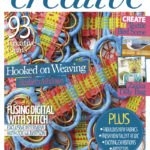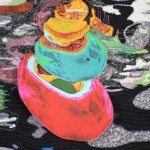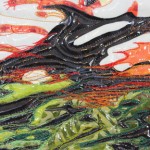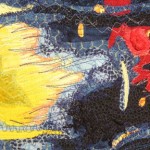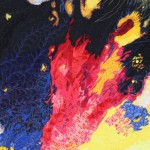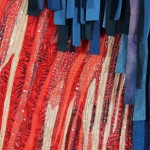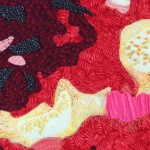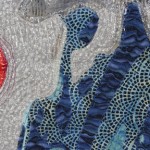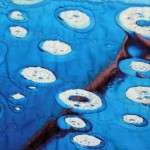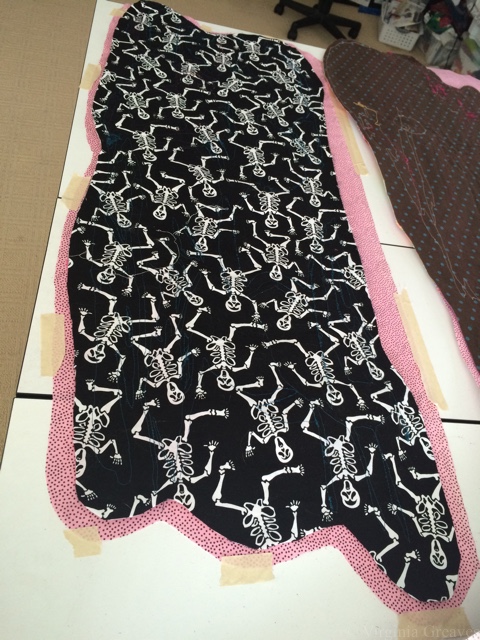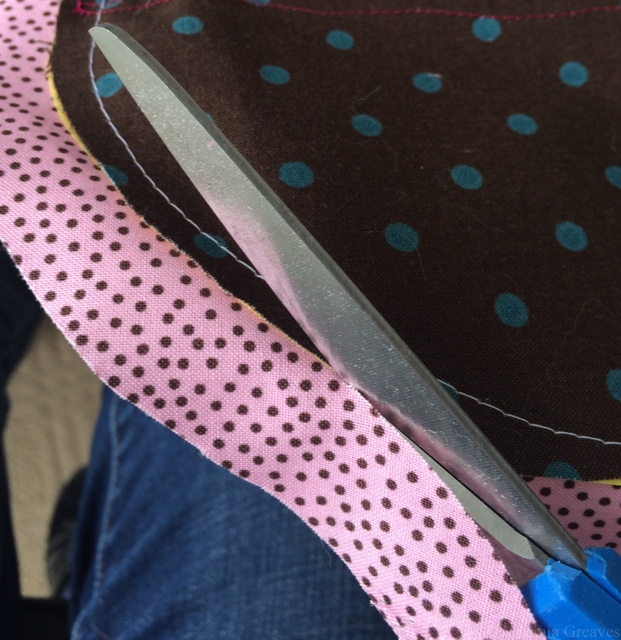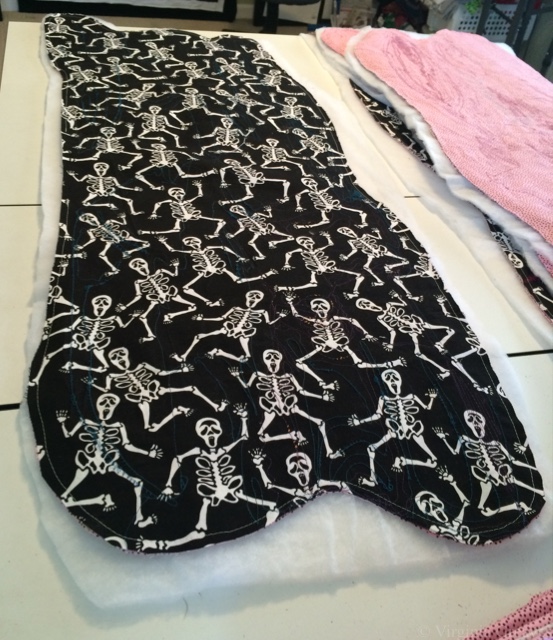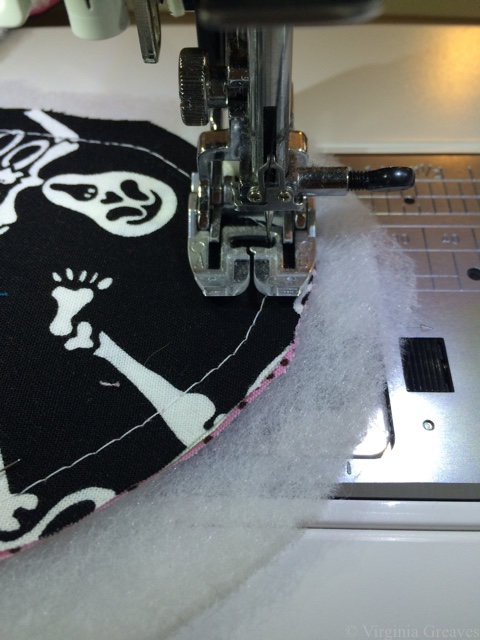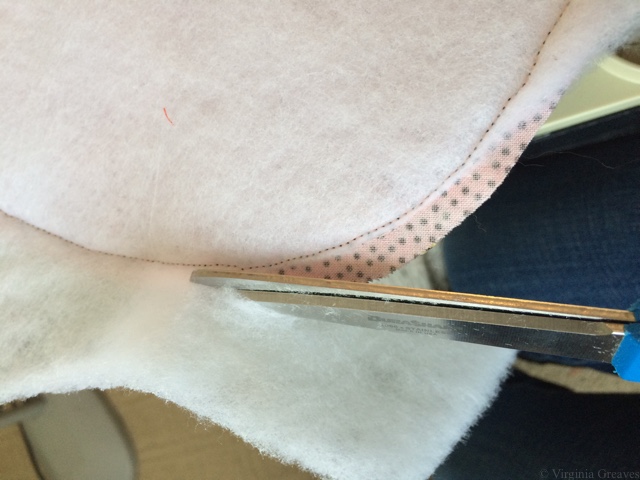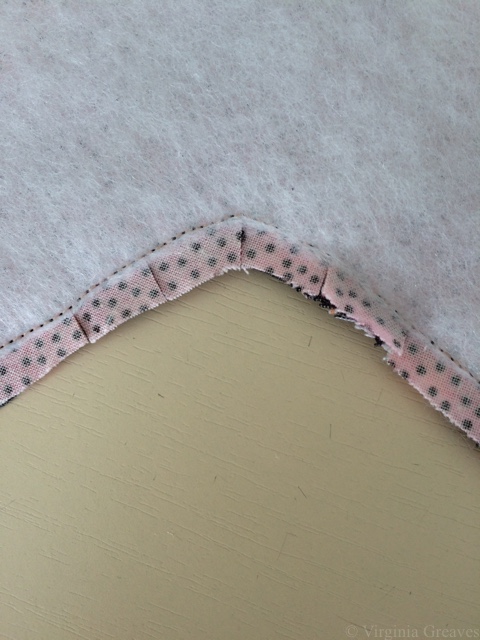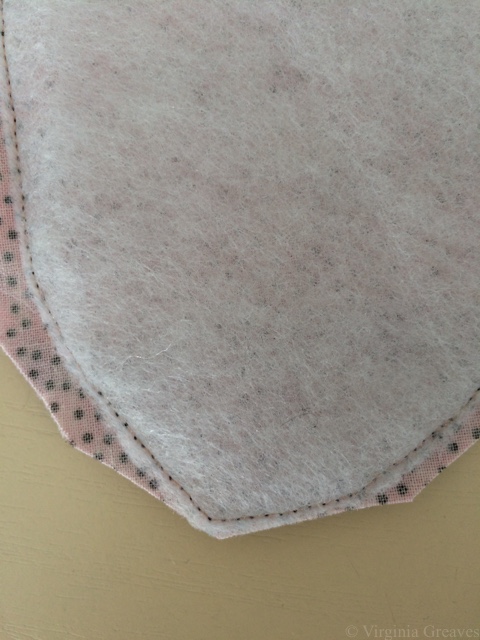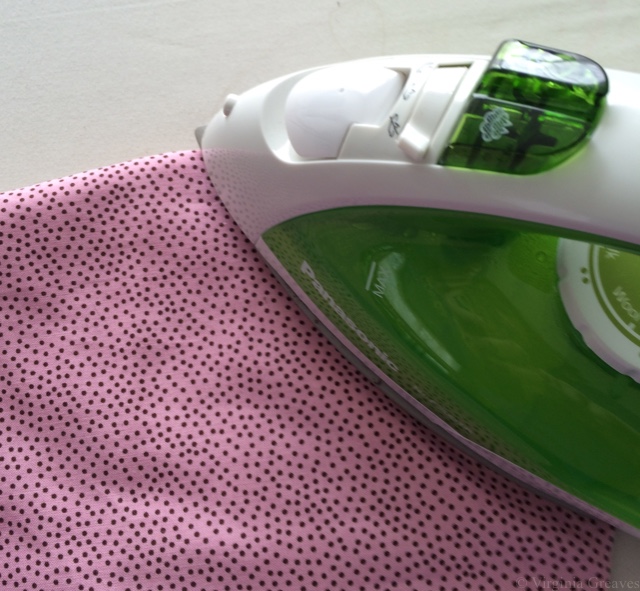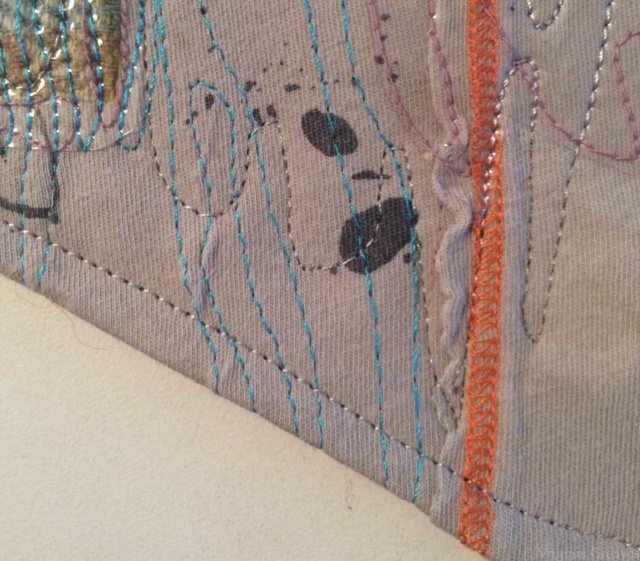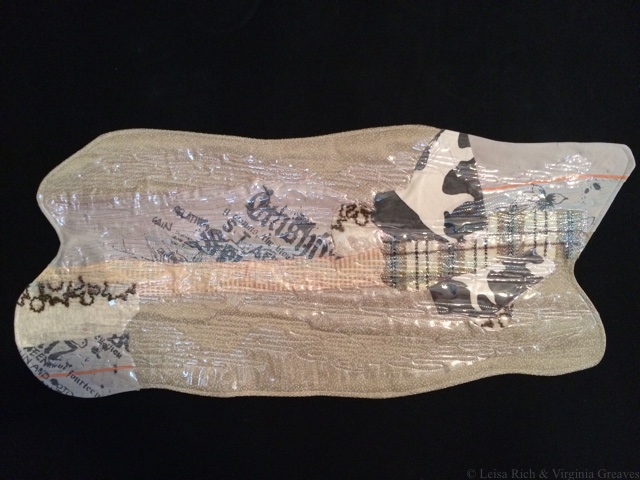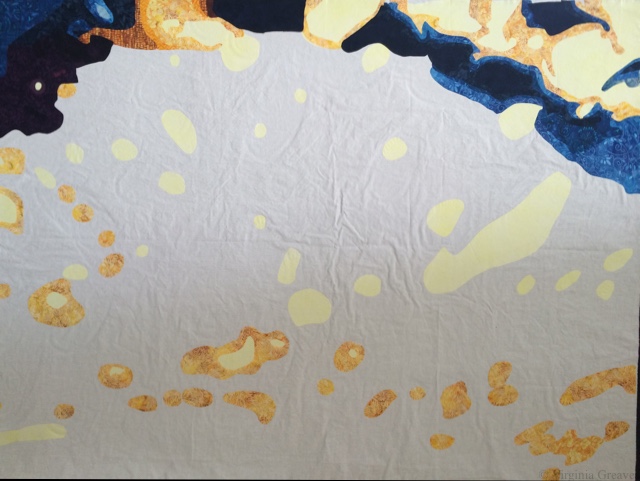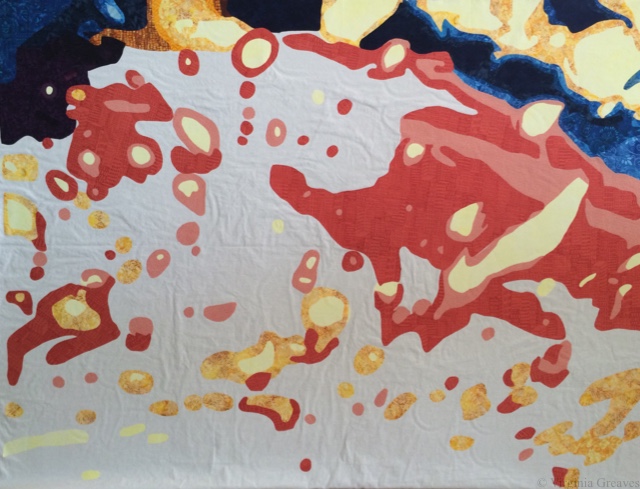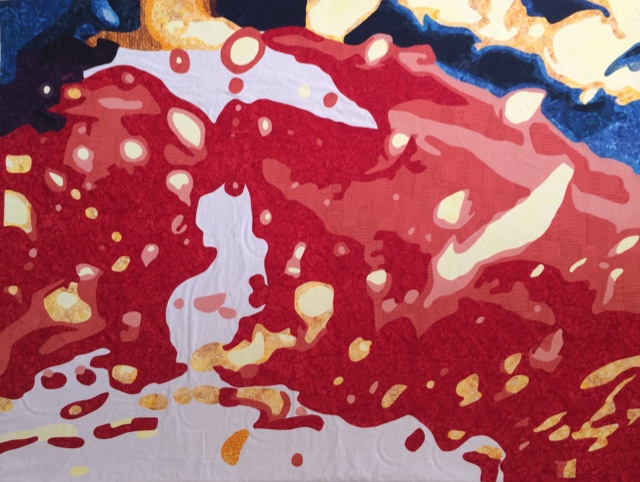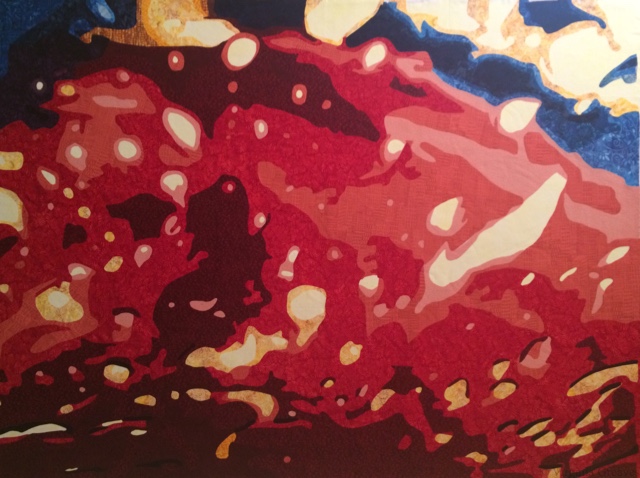Posts tagged collaboration

Wash & Wax article in Be Creative
0
Wash & Wax Media Exposure
0Leisa has written an excellent page on her website about our collaboration, Wash & Wax, (which you can find here) — and she asked me for a link to the SAQA Journal article that I wrote about the collaboration that was published in the Fall 2015 issue. I thought that surely I had the link on my website, but a quick search showed that I had neglected to share it. It’s amazing how life gets in the way.
2015 SAQA Journals are not yet available online to non-members, but with SAQA’s permission, here is our article:
I also found that I haven’t provided a link to the ArtsATL article written by Gail O’Neill. You can find it over here.

The Space In Between
0I find myself currently in the space in between. I accomplished so much work in January and February, and I now find that my creative self is requiring a break. I’ve been trying to cajole it into motion with small projects, leafing through pictures, reviewing calls for entry — it’s just not going anywhere right now. And that’s fine. Right now I have house company, and I’m enjoying doing for them. My studio went from looking like a train wreck a couple of weeks ago to a point now where it’s almost sterile. I put away all of the fabric from my last two projects as well as a bunch I got for Christmas. At least this gives me time to finish my taxes.
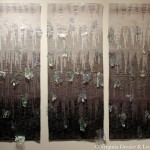 Leisa Rich & I decided to make one more piece for the Wash & Wax show exhibiting at Hammond Gallery at Jacksonville State University, thinking that the space was large enough to accommodate another piece. (By the way, we were wrong and ended up deleting a piece from the show for space limitations.) It’s a triptych in all grays — but with blue and green nail polish painted vinyl appliqués on the top. It’s much quieter from the other pieces but is striking on its own. I have a created a page for Dripped here.
Leisa Rich & I decided to make one more piece for the Wash & Wax show exhibiting at Hammond Gallery at Jacksonville State University, thinking that the space was large enough to accommodate another piece. (By the way, we were wrong and ended up deleting a piece from the show for space limitations.) It’s a triptych in all grays — but with blue and green nail polish painted vinyl appliqués on the top. It’s much quieter from the other pieces but is striking on its own. I have a created a page for Dripped here.
While we were in Jacksonville, we had a one-day workshop for the art students. They do not currently have a textile program, but it was mind-blowing to me what these young adults could do with fabric in such a short period of time.
This is one of the students next to Bryce Lafferty, one of the professors who also curated our exhibit. The student is learning on to draw using one of Leisa’s sewing machines, and Bryce is working on a hand-sewn 3-dimensional piece.
Another one of the students, perfectly comfortable using the sewing machine as he would a pencil.
This is Brittany, who I predict is a future fabric stash-er in the making. I spent some time talking with Brittany. She’s incredibly talented. She’s graduating in May, and I hope that she finds the perfect place to grow in her artistic journey after graduation.
This particular piece is 2-d but organically shaped.
Hammond Gallery is newly renovated, and it’s a gorgeous gallery space. This is the entry with Entry Point above the guest book.
The large wall was reserved for Industrial Car Wash. It’s in a completely different composition than how it was presented at Abernathy. It has interchangeable pieces so it can fit different spaces. Given that the wall was a little smaller than the one we used at Abernathy, it is taller and reaches almost floor to ceiling.
Next to it is Skitter.
On the other adjoining wall are 6 of the photographs and 6 of the Micro Bubble Series. We actually had 8 of each but felt the wall was too crowded with 2 more rows.
Next to Skitter and covering the back entrance is Drive Thru Slowly made from actual car wash strips.
A far corner has Polish on the left, the 2 remaining photographs and 2 remaining Micro Bubbles, and then Leisa and I decided to bring individual pieces of our work for comparison to the collaborative work. Leisa brought Placid which we placed sculpturally on a pedestal (although it can also hang on the wall). I didn’t get a close-up picture of it, but you can find it on Leisa’s website here.
My piece is a self-portrait entitled The Canary. You can read more about it here.
This is a pic taken during the reception. From the left, Blurred Vision, Agitated, and Bubble Bath.
This is an awesomely cool panoramic shot of the gallery that Leisa took.
And this is a side view of Dripped. It was at the far end and couldn’t be stretched into the panoramic. You can see the blue and green nail polish accents a little better in this shot.
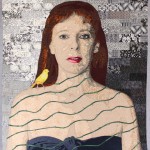 And as I mentioned before, the other piece that I hurriedly finished in time to be finished for the JSU show was my self-portrait, The Canary.
And as I mentioned before, the other piece that I hurriedly finished in time to be finished for the JSU show was my self-portrait, The Canary.
This one was really tough to photograph, and I’m not sure how well I succeeded. I was considering purchasing an external flash, but now I’m leaning towards using a local photographer that I’ve been introduced to that I think would do a better job of photographing my work. He essentially creates a white box — but a whole room like that, and then shoots through a pinhole. He also knows exactly the angles to set up the lights so that you’ll still see the texture of the surface of the work. I’ve photographed my own work enough to appreciate that the man really knows what he’s talking about.
But now here I am. I went from insanely busy finishing work for the opening at the JSU and preparing for the workshop — to nothing. I am in between. I think I’ll just enjoy it for a while.

Show Prep
0So we are closing in on opening for the Wash & Wax exhibit at Abernathy in September, the collaboration I’ve been creating Leisa Rich for over a year. My, how time flies. There are so many last minute details to take care. I still have to add labels to all the pieces — and I have figure out how to put a sleeve on a piece that’s 9 feet long.
I spent a great deal of time yesterday photographing work. I’m realizing that Leisa is a lot more particular about photography since she’s had experience working with a professional photographer. I see now that I don’t have enough even lighting, although I’ve gotten a lot better at taking a really sharp pic. Eventually, we’ll have them professionally photographed, but for now it’s me.
And now that we’re about a month out from opening, it’s time to start showing some details of what we’ve been doing. We have named all of the pieces, and I’ve upgraded their pages with detail shots. Closer to the opening, I’ll share full shots with pricing.
I don’t have pics yet of the small pieces that we’ve done. They’re 10″x8″ and framed under glass — known as The Micro Bubble Series. Also, the 25 foot by 7 foot piece that we’ve named Industrial Car Wash will have to be photographed in the gallery. (It only fits in my studio in a stack.) And there’s one last piece made with actual car wash strips, Drive Through Slowly. Oh yes — and there will also be some 10″x8″ framed photographs of Leisa’s inspirations.
I have written an article about the collaboration that will be coming out in the next SAQA Journal, and ArtsATL will have an interview with us published closer to the time of the show.
The show at Abernathy Arts Center will open September 18 and will run through October 16. The opening reception is Sept. 18th 6:30-8:30.
Then we will have a few pieces hang in Signature Gallery in Atlanta in January, and the entire show will be exhibited again at Hammond Gallery at Jacksonville State University for the month of February.

The Creative Soul
0The creative soul is a delicate thing. I’ve been working mine tirelessly. Between freelance editing work and getting ready for the Wash & Wax exhibit with Leisa, I haven’t stopped to take a breath in a while. But today I finally had to.
I made a fabric chatelaine. I had seen the one that Pam Holland made on her blog a few months ago, and it got me thinking. It would be nice to have something to hold the tools of my trade so I wasn’t constantly losing them or leaving them on the opposite side of the room from where I needed them.
I even found several patterns online, but all of them were not what I was looking for. Pam doesn’t have a pattern that she followed, but I went back to her blog so I could look at her additions — how she attached the pin cushion, for example — and try as I might, I can’t find her blog post anymore. She didn’t call it a chatelain, and all of my searching has been fruitless.
So I gave up today and took out my priest’s stole pattern — Simplicity 7950. (By the way, I remember having to go to some trouble to locate this pattern many years ago when I made a stole for a friend. I’m fairly certain it’s been discontinued but can sometimes be found on eBay.) I shortened it so it would fall a little below my waist. (In all honestly, there was a fold in the pattern about where I wanted it to be and I went with that.) Then I pulled black and white remnants and cut it out. I used a scroll pattern for the top, a black with a subtle bubble texture on the back. I cut out four pockets from scraps, making sure the bottom pockets were tall enough to hold Sharpies (I may stitch lines to separate them and make them stand up later) and the top pockets were tall enough to hold my cell phone. There’s still a lot of space at the top. Later, I’ll add a ring to hold my new TJ Lane thimble (I still have to make the beaded holder), a ring for an extendable wire to hold light scissors, and then maybe a small pin cushion. I consider it a work in progress.
And then for dinner, I bought whole canned tomatoes, a basil plant, and fresh zucchini and squash and have made the best sauce for dinner. Between generous amounts of olive oil, garlic, red pepper flakes, fresh basil, tomatoes, and roasted zucchini and squash, my whole house smells delicious. (I did add ground turkey for my husband so he wouldn’t think I had gone completely granola on him and start raiding the fridge a half hour after dinner.)
Leisa and I met a week or so ago with Lauren Bernazza, our curator, to look over what we have so far. The piece that’s going to cover the big wall is massive, but we decided that we needed some large solid pieces to pull everything together, so I’ve made about 20 more of those — and these are all very large. I just have to quilt them. They’re sitting on the floor in my studio. They’ll have to wait for now.
I also received #7 back from Leisa. This was the one that I had intended to cut up into mini framed pieces — but once it was done, I knew that it wouldn’t work, so it’s become an extra piece in our exhibit. We have room. I spray basted it yesterday, and it’s all ready for quilting, too.
I also spent a week or so ago cutting up 8 mini’s from the fabrics I used in #7. I used all the same background fabrics and then freehand cut shapes in blue, red, and yellow. Leisa has already transformed them, and we’ve bought frames for them.
#8 is a piece that we’ve been talking about for a long time. It is the only piece not appliquéd — it is a photo transferred directly on to fabric. I used Spoonflower, and although the print is a little dark, it will work fine. Our original intention was to hang it lengthwise so that it would be taller than the wall and spill out onto the gallery floor towards the viewer, but once we had the fabric in hand, we preferred it lengthwise. Leisa has it now. She’s been adding sparkly fabric and embroidery. I’m not sure when I’ll get it back. She’s much more possessive with this one — but I’m really okay with that. I have my hands full finishing #7 and those 20 more free form pieces.
I sat down last night and updated the website for the series. Although I’ve shown a lot of in process pics on my website, we’ve decided not to share the final pics on the website until the opening of the exhibition. I have updated all of the pages with the exhibit name “Wash & Wax” — I should have done that ages ago — and I added an announcement with a closeup pic of one of the pieces and details on the opening and our workshop on every page.
As of this month, pieces #1 through #6 are completed. #7 and #8 are still in progress, as is the large wall installation piece. Leisa is also planning an interactive piece using actual car wash strips and has framed her inspiration photographs. It’s going to be a fantastic show, and we’re all ready starting to plan other venues for it to travel to.
Update: And the reason I didn’t find the chatelaine on Pam Holland’s website is because what I was looking for was on Jenny Bowker’s website. It’s here — much more colorful than mine. I’ll definitely be adding a pin cushion like hers.

The Best of Intentions
0One of the last pieces that Leisa and I planned for our collaboration was a piece that we planned to cut into 12 smaller pieces that we would then frame and sell individually. I planned it to be a size that would split easily into 12 pieces and would fit in the size frame we chose with some extra to pull around to the back.
The best of intentions. So in my notes, I’ve been referring to this piece as Abstract-Mini’s.
I started with the red. I shared this on my Facebook to give a taste of what the new piece would be like.
And here is all the red laid out. I put on the grays only if they fell within the color areas I was working on.
Then I added yellow. Should have really done it first. Tucked it under the red.
And here are the blues — with a little bit of orange up in the right-hand corner.
Then I had to go back to the store because I didn’t have nearly enough gray. I had promised Leisa the appliqué of this last week, and so I was really pressed for time. When I came home to wash it (because I always wash my fabric before I use it), I realized my washing machine had died. It was full of soaking wet towels. The engine still worked, but a belt had broken so the tub couldn’t spin out all the water.
So I triaged all the towels across my deck. Unlike in other countries, hanging laundry in the yard is largely frowned upon here. It is certainly against my HOA rules, but I didn’t have a lot of choices.
And for my new fabrics, I set them to boil in my extra large ceramic pot on the stove. Boiling is actually better for getting out excess dye, and while I had it going, I rewashed all my new reds, too. (One of them had crocked onto some of the gray fabric all ready.)
By early Sunday, it was all cut out. I pinned it on my design wall and took a pic.
It’s much calmer than the other pieces. There isn’t as much darkness, and the grays give a lighter feeling of the soapiness in the car wash. I liked it, but I started to see that it wasn’t going to cut up well at all.
I did tell Leisa about my concern and told her that I’d leave her with the final decision. We set a meeting for today.
This morning, I had some time and decided that the dots in the pattern of the gray fabrics didn’t add enough texture, so I started randomly cutting out bubbles and adding them. I think it looks better. (The color is also better overall since it’s daylight in my studio at the time I took the pic versus nighttime in the pic above.)
We met at Starbuck’s, and she agreed — this wouldn’t cut up well into 12 pieces. Each of the 12 pieces needs to have a lot of detail. The scale of this is wrong for that. This will, however, still be a wonderful piece in its entirety. I have changed its temporary name to abstract #7.
And now Leisa has it to work her embroidery magic on. I also gave her #5. It’s done except for a sleeve on the back. She wants to spend a couple of weeks hand-stitching on that one.
The planned abstract #7 will now become #8. It will be digitally printed onto fabric, and I will share more on that piece at a later time. We both agreed that we love that inspirational piece too much to not include it in the show.
I still have to do 12 mini’s, though. I am planning to cut them more organically using the fabrics that I used in #7.
So I’m behind — and yet ahead.
My new washing machine comes tomorrow. When I picked it out, I told the salesman, it has to be a top loader, it has to accept high sudsing detergent (which any quilter that uses synthrapol knows — and which means no High Efficiency), and the basket has to be big because I do a lot of laundry. There were two choices. I went with the Whirlpool. I suspect that the next time I have to buy a washing machine, I won’t have a choice but to buy an HE. Let’s hope they’ve worked out the problems with them by then.
I’m also working on an article about the collaboration for the SAQA Journal. Leisa and I talked about the draft today, and this afternoon, I spent a couple of hours rephotographing three of the pieces in my studio on a white background. It took me a couple of hours to get the pics where I felt like they would be good enough. I understand why people pay a professional photographer. One shot can take a really long time.

Home Stretch
0I haven’t been very motivated to write much recently, but I have been getting a lot of studio time in. I think I’m just growing weary. Preparing for a big two-person show like this has been interesting — and a lot of work. At this point, everything is fairly planned, & it’s the execution that remains.
I finished quilting #5 — the really big one.  So glad I bought a big cone of red thread for this. I love the trapunto I put in all the yellow areas, but now I’m debating how to finish off the edges. I had planned on facing it, but I’m not sure how that would work with so many layers of batting along the top edge. I might use a red and blue binding, although that would mean yet another trip to the fabric store since my last 2 pieces took all my good red & blue fabric pieces & reduced them to scraps. For now, I’ve put it aside. Leisa wants to add some handwork, so I’ll pass it back to her.
So glad I bought a big cone of red thread for this. I love the trapunto I put in all the yellow areas, but now I’m debating how to finish off the edges. I had planned on facing it, but I’m not sure how that would work with so many layers of batting along the top edge. I might use a red and blue binding, although that would mean yet another trip to the fabric store since my last 2 pieces took all my good red & blue fabric pieces & reduced them to scraps. For now, I’ve put it aside. Leisa wants to add some handwork, so I’ll pass it back to her.
I picked up #6 yesterday & started quilting it. I had to take off all the strips Leisa had pinned on there. I numbered them & took pics — I even made some marks with my erasable white pen (though it’s almost empty & I can’t see most of the marks now). Not sure if I can get them in exactly the same place, but I’ll do my best. Figured they could wait until after its quilted — maybe even bound (or faced).
And then I’ve started planning out one that I’ll cut into a smaller pieces to be framed. It’s still in draft mode, but it’s been started.
After that, other than the pieces for the big wall installation — & another big installation piece that Leisa’s planning for the middle — there’s one left. I’ll call it #7. (I promise to give them better names eventually.) I think that I’ll have it printed from a manipulated digital image directly on to the fabric rather than another appliqué piece. Maybe 3 panels. Different from the others.
Home stretch.

Abstract #6 Cut
0You may not realize it, but I work on deadlines — by the ones laid out by exhibitions and shows and the ones I set for myself. I have a calendar that I mark with all important dates for shows I’m interested in entering. If I’m not diligent in keeping track, I would be guilty of promising a piece of work at more than one place at the same time, and because I’m a professional, I work hard to make sure that doesn’t happen.
However, at least twice in the past year, I’ve had shows that I’ve entered change their dates mid-stream. I’ve entered the show knowing that I’ll have until X date to be notified as to whether it will be included or not in the show, and after that date, if it isn’t accepted, I can enter it somewhere else.
Friday, I spent the afternoon looking at my inbox. Finally, at 5 o’clock, I went to the website for the show and found that they had changed their notification date. Today (4 days later), I received an email with an apology and announcement of the new notification date. <sigh> <shakes head> This show was a long shot for me, and quite frankly, I had another show I was going to enter it into, but now I can’t do that. I suppose if I win the lottery and get in, I won’t mind a bit, but chances are good that notification day will be a bit more bitter than if they had just given notification on time. <grumble grumble>
I have been cruising through #6 in the abstract series. This collaboration with Leisa Rich is called Wash & Wax and will premiere at The Abernathy Arts Center in Sandy Springs this coming September.
We met a couple of weeks ago and planned on it having the appliqué in one section and embellishment after quilting from Leisa in another section that would overlap mine.
The majority of the appliqué is red. I started with a new fabric for the first value, something peachy pink, a little hard to find in my local quilt shop. (It’s hard to find a pink that will work as a first value for red without screaming PINK.)

I then used up the secondary red color from #5 as my secondary value here as well. I planned out all of the pieces on my remaining fabric, and after it was all fused down, I found two pieces that didn’t make it to the ironing board, and I didn’t have enough of the building print to accommodate them. Rather than panic, I found a solid hand-dyed fabric that I had made several years ago. It isn’t textured, but it makes a decent substitution. Once all of the other fabrics are on there, I don’t think it’ll be noticeable at all.

The third value is also from #5, and I used up almost all of it. I only have a few very small scraps left.

I changed my fourth value for this one. I didn’t think that there was enough contrast between the red pinecones and the 5th value in #5, so this time, I found a red print of wings in my stash that’s been there at least 10 years. I like the movement it adds here.

And my fifth value is the same as what I used in #5, but it shows up better with the wing fabric.
I hope it’s obvious by now that this piece is less about color interpreted through water and more about the machinery that washes the car with strips of fabric. I have done all of the red in appliqué. The majority of the blue will be embellishment attached to the top after it’s quilted.

There’s a little yellow in the corner to show where the light is coming from.

And then this is a blotch of blue where all of the blue embellishment will go. I just wanted to put a dark fabric here that would be a background for the strips put on top, a better choice than the white.

I’m meeting with Leisa again later this week. She’s done embroidering #5 so I can start quilting it, and I’ll give her #6 to start on. If you remember, #5 is very large — 60″ x 48″ — so I suspect quilting it will be a bear. I had to order more batting for it.
Right now I’m quilting some of the smaller pieces for the wall installation piece. So much to do — so little time.

Construction of Free Floating Abstract Pieces
1I haven’t written much about the free floating piece that will cover one long wall of the gallery in our two-person show, partly because it has been an exercise in experimentation to see what would work. I think I’ve gotten better as I’ve gone along and thought that I would share some of my wisdom.
In these examples, Leisa has constructed the main pieces — the fronts. She has used either the skeleton or the brown polka dot fabric as a stabilizer (since she has all ready embroidered them at this point). The pink fabric will be the actual backing of each piece.
Here, I have placed the actual piece face down on the pink backing fabric (right sides together) — and I have taped down the backing fabric to keep it flat. I have merely rough cut it so that it is big enough for each particular piece. I pinned them together, checked the back to make sure it was smooth (making adjustments as needed), and then sewed them together at the 1/4″ mark with a basting stitch — leaving, of course, an unstitched area about 6″ long through which I can turn (or pillowcase) this later. Remember, I’ve sewn right sides together, so at this point, I have wrong sides facing out. I will later turn them right sides out. (Backstitch a few times at the beginning and ending — there’s a lot of tugging on these to turn them right sides out.)
When I first started doing these, I did not do this basting step. I merely layered the batting (2 layers of fluffy polyester), the backing, and the front. I didn’t worry too much because of the thickness of the batting. It was my goal to lightly quilt them so that each piece would be more sculptural than a flat quilt.
The economics finally won out, however, and at some point, we realized that there were so many of these, we would have to be content with one layer of batting. Well, that changes the game. At that point, I have to worry about puckering on the back.
After basting, I cut the pink backing even with the front.
Then I rough cut out a piece of batting, placing it underneath the backing, and pin all of those layers together.
I sewed a smaller stitch length on top of the previous one. In this example, the basting is white thread, the tighter stitch is black thread. Again, I leave the opening for turning.
Afterward, cut the batting (only) as close to the stitched line as possible. Also cut the batting from the section where there is no stitching, guess-timating where the stitching would be.
Before turning these right side out, you need to clip corners. (And yes, I forgot a few times and had to turn them back to clip them.) Clip the inside corners as close to the stitching as possible without clipping the stitching line. No worries if you do — just re-sew the line where you cut it before continuing.
On the outside corners, trim all of the layers close to the the stitches. You want to minimize the bulk in the corners so they will lay as flat as possible after turning.
At this point, you turn the piece right sides out. On one of these, since I have three layers, I turned it right sides with batting on the outside. I was on the phone and not thinking about what I was doing. Turn it so the backing and the front are facing right sides out.
And then, another step I added after several problems, the end result is much better if you take the time to steam the edges flat. Although the long edges are fairly tame swooping curves, I have some sharper shapes on the ends, and ironing them flat (from the back since I have some plastic pieces on the front) ensured that the back behaved.
Also iron down the unsewn edge through which you pulled the piece right sides out, folding along the seam allowance — being very careful to make sure that the end result pulls taut from the opposite corner on the back. If you don’t check, you will invariably end up with a little extra on the back. Pin that section to keep it in place (pin on the front).
Then flip back to the front side and sew a topstitch 1/4″ from the edge all the way around. This will also close the opening that we used for turning.
Then quilt. Although I generally quilt my pieces to death, these are meant to be more sculptural. That’s partly why we chose to use the polyester instead of the flatter cotton batting. I quilted them in sections so that some areas rise up.
This is one of the turned pieces.
The intention is to hang them on the wall independently, meaning that its presentation will be specific to the individual exhibition.
I toyed with the idea of using this same technique on abstract #4 — which is sitting on my design wall, ready to be quilted — since we’ve discussed making its edges irregular as well. The abstract wall pieces are small and I could get away without pin basting them. However, turning abstract #4 would require basting — and I can’t pin baste many of these because of the added plastics. I also know that intense quilting stretches the fabric, and not having a place for it to go could be problematic.
After research, I’ve decided that I will spray baste it, as I’ve done several of the others, and then after quilting, I’ll add large strips to the front which I’ll use as facing and turn to the back. Of course, I will then have to hand sew the facing down on the back, and we know I don’t love hand sewing — but I think it’s the best solution. I’ll add a sleeve after the facing is done.
Where there’s a will, there’s a way.

Abstract #5 Comes Together
0All of my studio time nowadays is dedicated to completing the projects for the two-person show I’m collaborating on with Leisa Rich to be debuted in October. Last week, while she was working on #4, I drafted #5 and started cutting it out.
Leisa asked me to go big on this one — so that is what I did. I went to the limits of what I could currently handle in my studio for this kind of project — 48″ x 60″. I had to have a surface large enough to fuse the shapes onto my canvas. Since my table wasn’t large enough, I ended up laying one of my design walls flat on the floor — it was exactly 48″ wide.
And for the pattern, for the first time in years, I used the services of a blueprint company and a vector program. My copy of CorelDraw was woefully out of date, and I don’t have a PC anymore, so I ended up purchasing iDraw which worked perfectly for my purposes. (Even after 15 or so years, my Wacom Graphire 4 tablet continues to be a workhorse for me.) I created the pattern and emailed it to the local shop. I did spend some time talking to them about what I wanted though because a print of this size can cost upwards of $80. I had it printed out on inexpensive paper on their 36″ wide printer and then taped the two pieces together (the final cost was under $10).
I also had to buy some rather large pieces of red fabric for this. I didn’t have anything in my stash nearly large enough.
Here you see it with all the yellows, blues, and dark purples.
And here you see the beginnings of the red.
Lots and lots of red. For this particular value, I had to buy 2 yards, and the largest piece still had to be spliced in one place because it was wider than 42″ (the width of the fabric).
And this is the final piece. I don’t know that my iPhone did the best job in the world, but it’s fine for an in-process shot. I think that this one is the most evocative of the car wash theme that we’ve done so far.
To be honest, I was surprised at the huge leap between value 4 and 5 — and that 6 didn’t stand out very well against value 5– but after cutting out almost 2 yards of value 5, I wasn’t willing to start over. It still accomplishes what I wanted it to. There is a lot of room for Leisa to go wild on the embroidery — can’t wait to see what she does with this one.
The last time we met, she gave me some more pieces to work on for the large wall piece, and I still have #4 to quilt. Lots to do.
